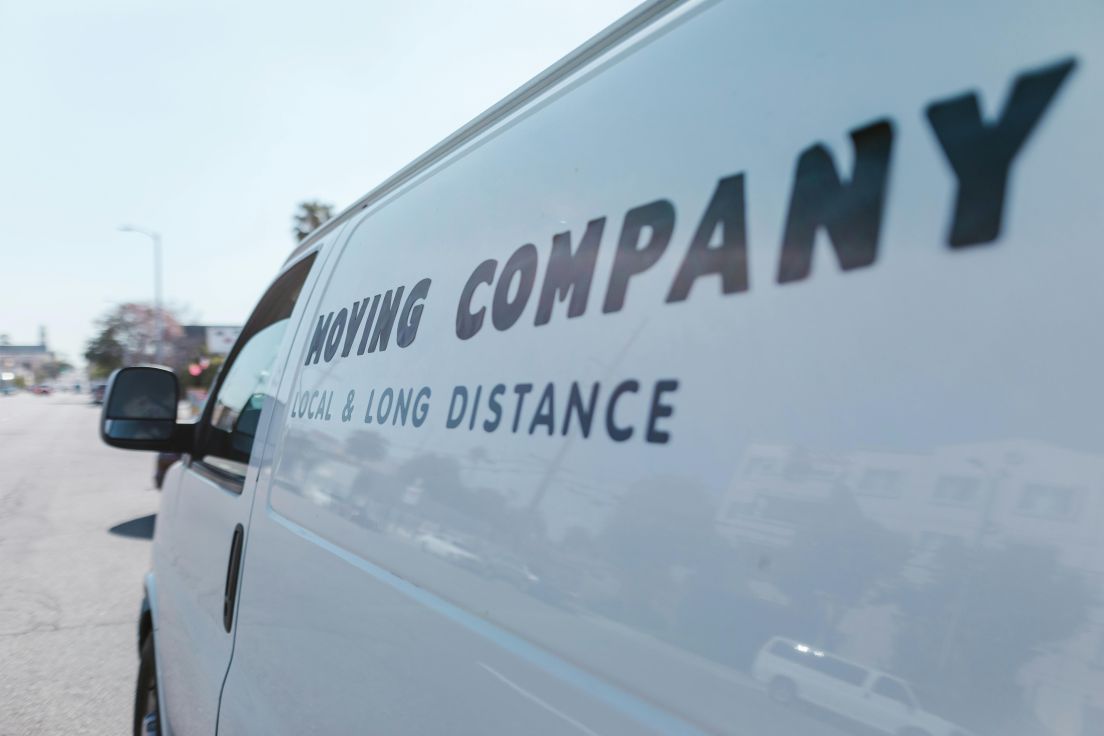In today’s competitive digital landscape, the role of design in local lead generation has never been more crucial. A well-crafted website not only captures attention but also builds trust and guides potential customers toward taking action. At our company—formerly known as Cytnet, Inc (2005–2014)—we understand that great design is more than just aesthetics; it’s a strategic tool for driving local business growth. With over 300 custom websites created and a client list that includes major brands like Moishes Moving and American Van Lines, we specialize in creating amazing designs adapted to the latest trends & technology.
Our mission is to help businesses stand out in the market through high-quality web design, programming, and digital marketing solutions. Whether you’re a small local business or a large corporation, our comprehensive services—from responsive web design and SEO to Google Business local optimization—are tailored to boost your online visibility and generate qualified local leads. By combining innovative design with strategic local SEO practices, we empower brands to connect with their communities and convert online traffic into real-world customers. Ready to elevate your local presence? Call us today at 954-621-2381.
How Visual Design Influences User Trust and Engagement
Visual design plays a pivotal role in shaping how users perceive a business, especially in the context of local lead generation. When potential customers land on a website, their first impression is formed within milliseconds, and this initial judgment is largely based on visual elements. According to a study by Stanford University, 75 percent of users admit to making judgments about a company’s credibility based on its website design. This underscores the importance of a visually appealing and strategically designed website in building trust and encouraging user engagement.
Trust is the foundation of any successful lead generation strategy. A clean, professional, and cohesive visual design communicates reliability and competence. Elements such as consistent color schemes, high-quality images, intuitive navigation, and readable typography contribute to a positive user experience. These design choices not only make a website aesthetically pleasing but also signal to users that the business is legitimate and trustworthy. For instance, the use of white space can enhance readability and focus, while a well-structured layout can guide users seamlessly through the content, reducing friction and increasing the likelihood of conversion.
Engagement, on the other hand, is driven by how effectively a website captures and retains user attention. Visual design elements such as interactive features, animations, and strategically placed calls-to-action (CTAs) can significantly boost engagement rates. A report by Adobe revealed that 38 percent of users will stop engaging with a website if the content or layout is unattractive. This highlights the need for businesses to invest in design strategies that not only attract visitors but also keep them interested long enough to take desired actions, such as filling out a contact form or signing up for a newsletter.
Color psychology is another critical aspect of visual design that influences user behavior. Different colors evoke different emotions and can subtly guide users toward specific actions. For example, blue is often associated with trust and security, making it a popular choice for financial institutions and healthcare providers. To learn more about how color choices impact conversions, check out this detailed guide on how to use color psychology to boost conversions.
Moreover, visual hierarchy—the arrangement of elements in order of importance—plays a crucial role in directing user attention. A well-implemented visual hierarchy ensures that the most important information, such as value propositions and CTAs, stands out and is easily accessible. This not only enhances usability but also increases the chances of converting visitors into leads. For a deeper understanding of this concept, explore our article on the role of visual hierarchy in web design.
Another essential factor is mobile responsiveness. With over 60 percent of web traffic coming from mobile devices, a responsive design that adapts seamlessly to different screen sizes is no longer optional. Google also prioritizes mobile-friendly websites in its search rankings, making responsive design a key component of both user trust and SEO performance. A visually consistent experience across all devices reassures users that the business is modern, attentive to detail, and customer-focused.
Incorporating trust signals into the visual design can further enhance credibility. These include elements such as customer testimonials, security badges, industry certifications, and recognizable brand logos. When strategically placed within the design, these signals can significantly influence user perception and decision-making. For example, placing a testimonial near a CTA can provide the social proof needed to encourage a user to take action.
Local businesses can also benefit from showcasing their community involvement through visual content. Featuring images of local events, staff members, or community projects can create a sense of familiarity and trust among local audiences. This localized approach to visual design not only humanizes the brand but also strengthens its connection with the target market.
To summarize, effective visual design is not just about aesthetics—it is a strategic tool that influences how users perceive and interact with a website. By focusing on clarity, consistency, and user-centric design principles, businesses can build trust and drive meaningful engagement, ultimately leading to higher conversion rates and successful local lead generation.
“Design is not just what it looks like and feels like. Design is how it works.” – Steve Jobs
Here are some practical examples and references that illustrate the impact of visual design on user trust and engagement:
- Stanford Web Credibility Research: Found that 75% of users judge a company’s credibility based on website design.
- Adobe Consumer Content Survey: Revealed that 38% of users stop engaging with a website if the layout is unattractive.
- Using Web Design to Showcase Business Credibility: Offers insights into how design elements can enhance perceived trustworthiness.
- How to Design a Homepage That Builds Trust: Discusses homepage design strategies that foster user confidence.
- Google Mobile-Friendly Test: Emphasizes the importance of responsive design for SEO and user experience.
For businesses looking to improve their local lead generation through effective design, understanding the psychological and functional aspects of visual design is crucial. Whether you are revamping your current site or building a new one, consider exploring our services or learning more about how we help businesses grow through strategic design solutions.
Optimizing Landing Pages for Maximum Local Conversions
To drive local lead generation effectively, businesses must focus on creating landing pages that are not only visually appealing but also strategically designed to convert local visitors into customers. A well-optimized landing page serves as the digital storefront for a business, and its design plays a crucial role in influencing user behavior. The first step in optimizing a landing page for local conversions is ensuring that it is tailored to the specific needs and preferences of the local audience. This includes using localized content, such as city or neighborhood names, local testimonials, and geo-targeted keywords that resonate with the community. Incorporating these elements helps build trust and relevance, making visitors feel that the business understands their unique needs.
Design elements such as layout, color schemes, and typography should align with the brand identity while also appealing to local sensibilities. For instance, using color psychology strategically can enhance emotional engagement and guide users toward desired actions. A clean, uncluttered layout with a clear visual hierarchy ensures that the most important information—such as contact details, service offerings, and calls-to-action—is easily accessible. For more insights on how visual hierarchy influences user behavior, explore this article on visual hierarchy in web design.
Another critical aspect of landing page optimization is mobile responsiveness. With a growing number of users accessing websites via smartphones, especially for local searches, ensuring that landing pages load quickly and display correctly on all devices is essential. Mobile-friendly design not only improves user experience but also positively impacts search engine rankings, making it easier for local prospects to find the business online. Additionally, incorporating trust signals such as customer reviews, certifications, and secure payment icons can significantly boost credibility and conversion rates.
Effective landing pages also feature compelling and concise copy that communicates value propositions clearly. Headlines should be attention-grabbing and relevant to the local audience, while subheadings and bullet points should highlight key benefits and services. Including a strong, action-oriented call-to-action (CTA) is vital. Whether it’s scheduling a consultation, requesting a quote, or signing up for a newsletter, the CTA should be prominently displayed and easy to interact with.
Integrating interactive elements like maps, click-to-call buttons, and contact forms further enhances usability and encourages engagement. These features make it convenient for users to take the next step, especially when they are looking for immediate solutions. To ensure consistency and reinforce brand messaging, the design of the landing page should align with other marketing materials and digital assets. Learn more about aligning design with marketing goals by visiting our marketing page.
Finally, continuous testing and analysis are key to optimizing landing pages for maximum local conversions. A/B testing different design elements, headlines, and CTAs can provide valuable insights into what resonates most with the target audience. By leveraging analytics tools, businesses can track user behavior, identify drop-off points, and make data-driven improvements. For a deeper understanding of how design supports lead nurturing and conversion, check out our article on designing a website that supports lead nurturing. In summary, a well-designed, locally optimized landing page is a powerful tool in any lead generation strategy, turning casual visitors into loyal customers through thoughtful design and strategic content.
In conclusion, design plays a pivotal role in local lead generation by creating visually appealing, user-friendly, and trustworthy experiences that resonate with the target audience. From intuitive website layouts and compelling calls-to-action to consistent branding and mobile responsiveness, effective design helps capture attention, build credibility, and guide potential customers through the conversion funnel. By prioritizing thoughtful and strategic design, local businesses can significantly enhance their ability to attract and retain high-quality leads, ultimately driving growth and success in their communities.






